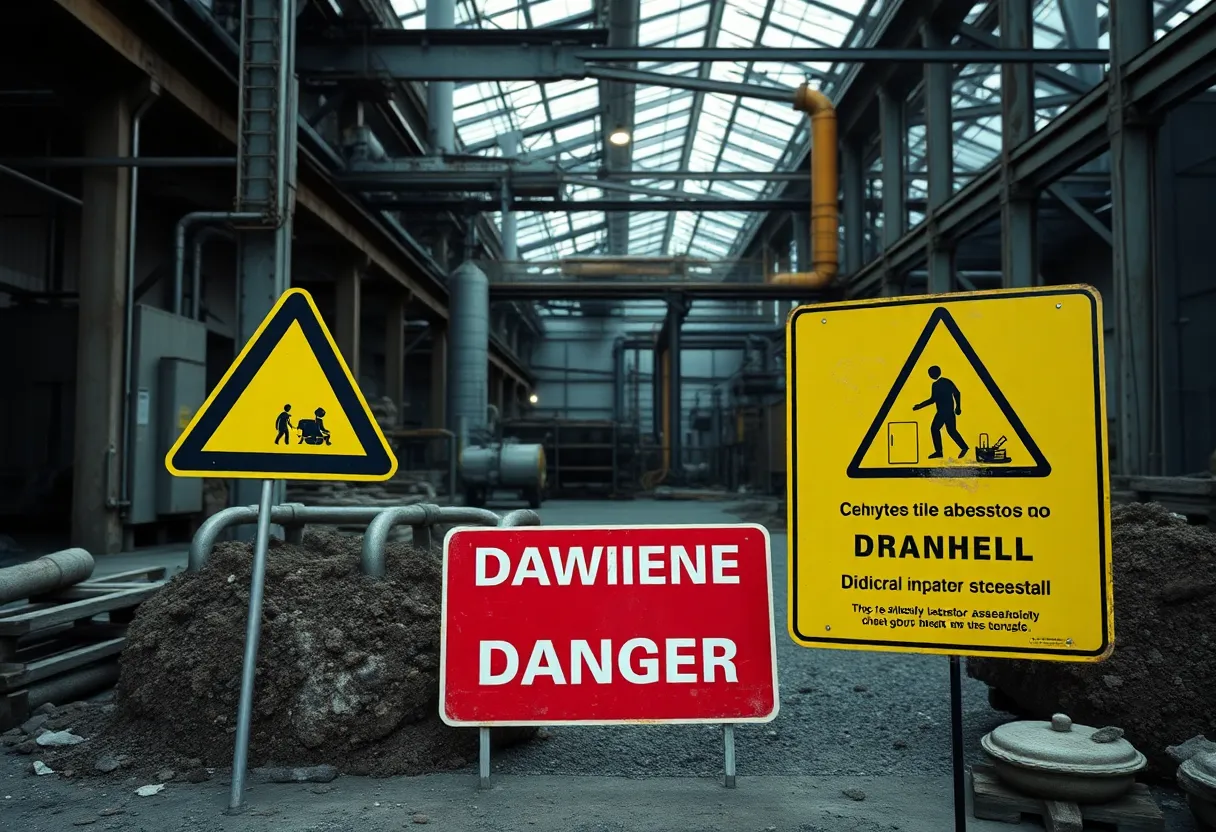News Summary
The EPA reevaluates the ban on chrysotile asbestos, raising public health concerns as exposure continues to be linked to 40,000 deaths annually in the US.
EPA Reconsiders Ban on Chrysotile Asbestos: A Risky Move for Public Health?
In a move that has sparked significant concern among health advocates and community members alike, the United States Environmental Protection Agency (EPA) is reevaluating the ban on chrysotile asbestos, the last type of asbestos still permitted for use in the country. This decision could have dire consequences, as asbestos exposure is linked to an alarming 40,000 deaths annually in the US, making it a critical public health issue.
Understanding Asbestos and Its Dangers
Asbestos is a known carcinogen associated with a range of cancers, including mesothelioma, lung cancer, ovarian cancer, and laryngeal cancer. The material was widely used in various industries until the production stopped in the US in 2002, yet it continues to be imported from Brazil. The persistence of asbestos in certain products—such as brake blocks and sheet gaskets, particularly in the chlor-alkali industry—highlights its ongoing potential risk.
Despite over 50 countries around the world imposing outright bans on all forms of asbestos, the EPA’s reconsideration of the ban is particularly disconcerting, especially following a series of deregulation efforts during previous administrations. This situation raises the question of whether the EPA is prioritizing industrial interests over public health.
The Personal Cost of Asbestos Exposure
The tragic story of individuals like Sherry Massie illustrates the severe impact of asbestos exposure. Massie’s husband succumbed to mesothelioma linked to his military service, which involved working in environments where asbestos was prevalent. Such heart-wrenching testimonies underscore the devastating reality faced by families of those exposed to this deadly toxin.
An Administrative Shift and Its Implications
The Biden administration had initially positioned the ban on chrysotile asbestos as a significant milestone in cancer prevention. However, the current EPA review process, expected to take about 30 months, has left many questioning the administration’s commitment to safeguarding public health. The review is designed to assess if the ban “went beyond what is necessary” and if alternative measures could suffice, but some critics deem this reconsideration as a severe setback for public health policies.
Health advocates emphasize that exposure to even low levels of asbestos poses serious health risks, with asbestos fibers capable of remaining airborne and leading to health issues long after the initial exposure. This scientifically backed concern amplifies the urgency for a robust ban rather than a reassessment.
Political and Environmental Tensions
The leadership of the EPA, which includes individuals formerly affiliated with the American Chemistry Council, raises eyebrows regarding the motivations behind this reevaluation. The agency’s reconsideration has not only reignited debates about public health but also highlights ongoing tensions between environmental regulation and the influence of industrial interests. This dynamic reflects how policy decisions can sway back and forth based on the administration in power and their respective priorities.
In light of historical context, where former administrations have suggested conspiracy theories to challenge asbestos bans, the current state of affairs exemplifies the challenging landscape of public health regulation. The EPA’s reaffirmation to consider “all reasonably available information” may sound reassuring, but for many affected by asbestos-related illnesses, this new direction feels alarmingly uncertain.
Future Implications and Community Actions
The fate of chrysotile asbestos hinges on the review process that the EPA has embarked upon, with serious implications for health and safety. The ongoing advocacy efforts from public health organizations and community leaders remain crucial as they push for comprehensive protections against this dangerous substance.
As the EPA charts its course on this issue, it is imperative that the health risks associated with asbestos are not overshadowed by industrial lobbying. The stakes are high, and the lives of countless individuals hang in the balance as the nation contemplates its approach to regulating toxic substances.
Deeper Dive: News & Info About This Topic
HERE Resources
Crisis in Libby: Closure of Asbestos Clinic Raises Alarm
School District of Philadelphia Faces Historic Criminal Charges Over Asbestos Violations
Philadelphia School District Faces Groundbreaking Criminal Charges Over Asbestos Mismanagement
Philadelphia School Board Takes Historic Steps in Asbestos Management
Philadelphia School Board Takes Bold Steps Regarding Asbestos and Charter Schools
Philadelphia School District Faces Historic Criminal Charges Over Asbestos Violations
The Philadelphia School Board’s Historic 5-Hour Meeting Packed with Crucial Decisions
Philadelphia School District Charged in Groundbreaking Asbestos Case
Chrysotile Asbestos Ban Under Review: A Risky Rethink?
Major Legal Victory in Asbestos Case: $17.2 Million Verdict Against Georgia-Pacific



















